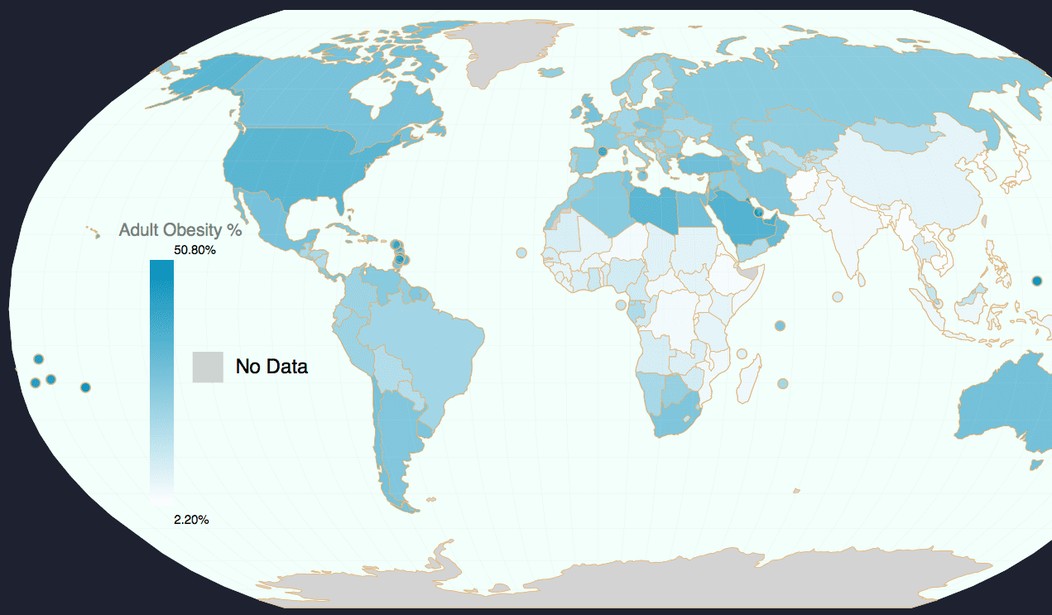Two years ago, I took a trip to Rome, Italy. Besides enjoying all the wonderful historical sites, the amazing art, the incredible food, and the wonderfully friendly people, after a while I was struck by the fact that I noticed hardly anyone was obese. Sure, there were a few older people (like me) who were carrying around a few spare pounds … but my wife and I remarked how we just did not see the kind of obesity we see on a daily basis here in America.
Was it because the Italians ate food that was fresh and in season? Was it because they had to walk so much more than we did? I was left with the impression that not only Italy but probably the rest of Europe was in so much better shape than America when it comes to excess pounds.
Well that’s what you get for drawing conclusions from one week in only one city in only one country. I was wrong — on all counts! There is an obesity problem in Europe too, and some of their nations are catching up to America (sadly).
But I was also completely wrong in assuming that America is the most obese nation on earth. Of all the nations, the United States is not even in the top ten of the most obese! We’re number 19! (Hooray?)
Here are the ten most obese countries in the world, from least to most. You probably haven’t heard of most of them…
10. Tuvalu: 40.3 percent.
9. Kiribati: 40.6 percent.
8. Qatar: 42.3 percent.
7. Marshall Islands: 42.8 percent.
6. Niue: 43.2 percent.
5. Tonga: 43.3 percent.
4. Samoa: 43.4 percent.
3. Nauru: 45.6 percent.
2. Palau: 47.6 percent.
1. Cook Islands: 50.8 percent.
Amazingly the most overweight countries are in the Pacific — a region many geographers call “Oceania.” They may be sparsely populated, but they have the highest percentage of obese people on the planet (obesity being defined as having a body mass index of 30 or over).
The next most overweight region in the world is the Middle East! I never would have guessed that! But the facts are that nations such as Qatar (43.2 percent), Kuwait (39.7 percent) and Saudi Arabia (37.7 percent) still beat out the United States. In fact, in the list of the top 20 most corpulent nations on earth, America is only number 19 with 33.1 percent of our people being obese.
Still, that’s a third of our adults out of a population of roughly 320 million people. (This article is not even touching childhood obesity which is major problem in our country.)
How does Europe do? Not too bad, but they are catching up to us. The research I have done shows some varying percentages (some have shown the tiny little nation of Andorra as the most obese), but the consensus is that the United Kingdom is the most obese nation on Europe (with stats showing anywhere from 24 percent to 28 percent of the adult population being overweight). They are followed by Hungary with about 24 percent, and then the rest of Europe is close behind.
In contrast, the skinniest countries are usually the Third World, developing countries such as Bangladesh (3.6 percent), Afghanistan (2.9 percent), and North Korea (2.4 percent). However, the highly advanced Japan throws us a curve here with only 3.3 percent of its adult population suffering from obesity.
Clearly, rising obesity is a problem all over the world. How did we get this way? It does not take a rocket scientist to figure out that copying America’s infatuation with garbage fast food and lack of physical activity certainly contributes to obesity. The people of American Samoa followed America’s tragic diet trends.
I think we all know how America got fat. Just look down the street at the prevalence — the overabundance — of fast food and grocery stores providing prepared meals high in sugar, preservatives, and fat.
What can be done? Obesity is killing us. It is enslaving whole families, robbing them of quality of life, and inflicting many preventable diseases such as Type II diabetes and heart disease. I think the answer is clear. It’s not easy, but it is clear.
First, change begins in the mind. We have to admit we are obese and stop making excuses about the way we were raised or the fast food joint that is around the corner. Stop making excuses that eating a healthy diet is too hard or too expensive. (Which is harder and more expensive? Eating a healthy diet or getting chemo or heart surgery?)
We must realize that most of what is in the typical American diet is toxic. Look at what you eat. Is most of it from a box or package? If it is, then in all likelihood it is filled with preservatives, sugar, and unhealthy fats. Do you know how much sugar the average American consumes in a single year? We eat and drink anywhere from 130-150 pounds of sugar a year. Imagine that! How can our bodies continue to take in this stuff when our bodies were never meant for this kind of assault? Forbes’ David DiSalvo broke down what all this sugar does to just your brain.
The answer is not “nanny government” taxing our sugary soft drinks or banning “big gulp” drinks in large cities. People always find a way around such big-government foolishness. The answer, of course, is in self-government; that means self-control. It’s up to you and me saying that we are going to stop putting poison in our bodies, that we are going to get help, that we are going to get off the couch and start getting active.
Begin by just imagining how good you will feel without those pounds. You will begin to be free and you will be released from so many pains if you lose that gut. You can do it, you know. So what if you’ve tried and failed before? Start again right now.
Don’t go by those fast food joints with all the doughnuts and ice cream and fried junk. Start cooking your own food with fresh, in-season ingredients. Throw out the sugary drinks in your home, along with the sugary desserts … years ago I did this by thinking of them as just sewage. It made it easier to reject the foods that I had become addicted to. Don’t know what to eat? I do recommend Dr. Caldwell Esselstyn‘s diet.
He calls it a “plant perfect” diet. It is truly a vegan diet. Some would say this is extreme … but I think heart surgery and chemo treatments are more extreme.
His diet is proven to actually reverse heart disease and some forms of diabetes … so I think his diet has plenty of merit.
Personally, I follow a Mediterranean diet. It is low in carbs (which is just another form of sugar), low in meat, and rich in lots of fresh fruits and vegetables. I hated fruits and vegetables as a kid, but as an adult I realized that I could either start eating the things that make me feel and live better … or live in a body that is overweight and unable to move. I started eating better as a result.
Lastly, we have to get off the couch. Being active — exercising several times a week — really improves your mood and general health. You feel better about yourself, you begin to look better and feel more confident, and you become more optimistic about your future. You don’t have to train for the Olympics. If all you can do is walk around a park, then do so several times a week. Do more if you can. Go biking or hiking. Play tennis or basketball or get involved in martial arts. The point is, just start moving.
If you ever feel like you can’t do this or that exercise, that it’s all just “too hard,” watch this inspirational video. If a man in a wheelchair can do this, what’s holding me back from improving my life?
Over 20 years ago, I was flabby couch potato. I hated exercise. My wife loved to walk and bike and I would go with her just to be nice, but I never enjoyed it. Then my father died and I simply could not cope with the grief, so I started walking as therapy for my grief. Soon that turned into running. I felt better, the grief eventually lifted, and my “therapy” turned into a good addiction! I’ve been running every week since then and have even competed in marathons!
We don’t have to stay in the situation we are in right now. We have the power to change our attitude and response to obesity. Choose to do something now…and do it.









Join the conversation as a VIP Member